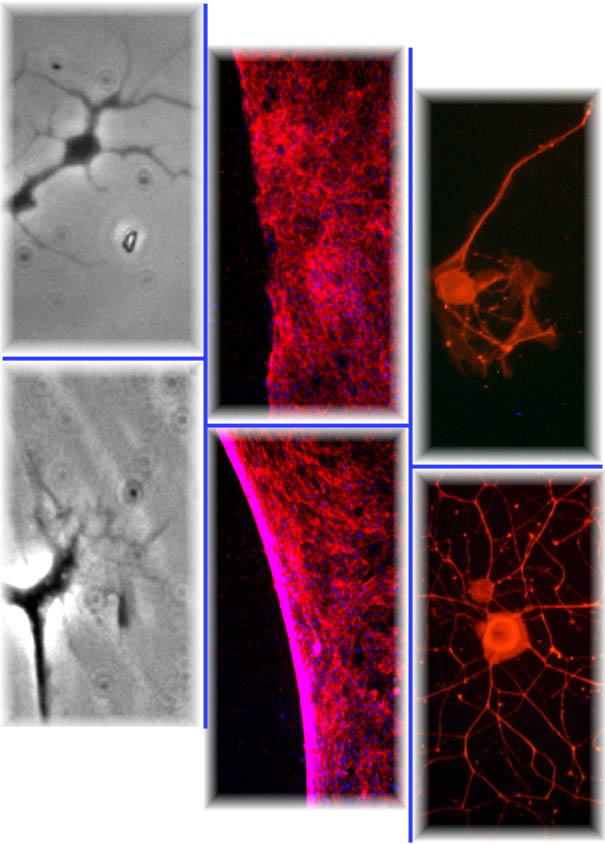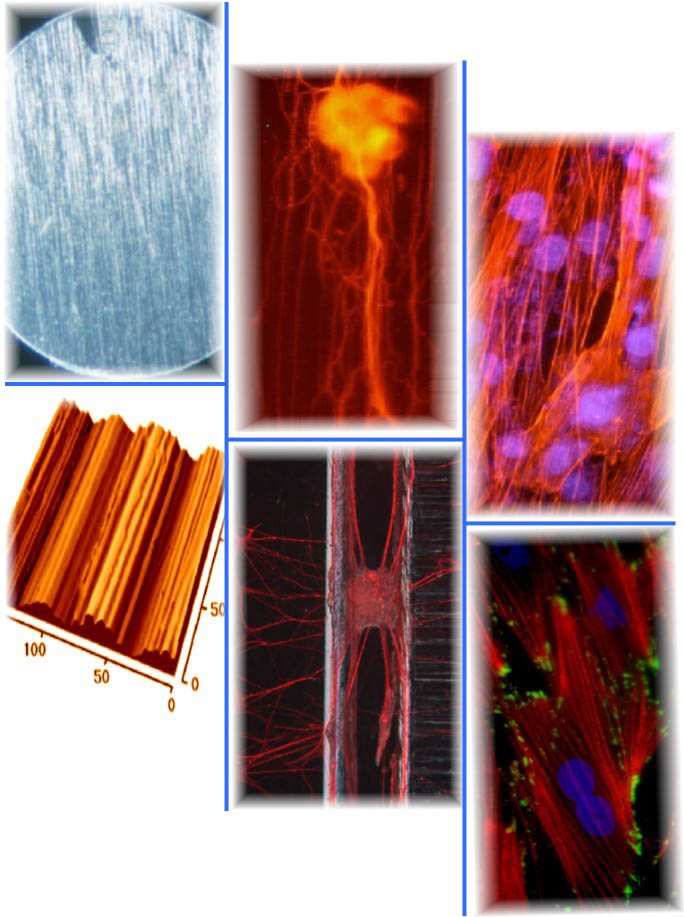|
 Surface Chemistry Surface Chemistry
It is well accepted that cell-material interactions are in large part mediated by the nature and conformation of surface bound proteins as well as the various cellular receptors that engage such proteins. A
myriad of studies have identified differences in cell attachment, migration, neurite outgrowth, and gene expression as a function of material hydrophobicity. It is now well accepted that material surface
chemistry manifests such effects on cell behavior through modification of the bound surface protein layer. Indeed, the bioactivity of adsorbed ligands can vary dramatically as a result of the underlying
surface chemistry. With respect to the behaviors elicited from relevant cell types of the CNS, our studies have demonstrated that subtle variations in material surface chemistry are unlikely to ultimately
influence the chronic tissue response to implanted materials. Using well-characterized model substrates, we found that important cellular components of the CNS wound healing response, that is, astrocytes
and meningeal-derived fibroblasts, were capable of colonizing and secreting a complex bed of extracellular matrix
(ECM) on materials of widely differing surface chemistry. Colonization by such reactive cell types may be an
undesirable response to some types of CNS-based implants, especially for those that are intended to interact
specifically with selected cell types, like neurons, as exemplified by microelectrodes and implants intended to promote the regeneration of neurons.
To address this matter we have focused our efforts on generating surfaces that resist colonization by non-target
cells, and surfaces that specifically target specific behaviors of selected cell types. For example, through the use
of protein-resistant coating technology, it is possible to generate material surfaces that resist the attachment and grow th of cells. Subsequent modifications to the technology have allowed us to use the protein-resistant coating
to immobilize ligands for promoting desired cell responses with significantly higher degrees of bioactivity than conventional methods. th of cells. Subsequent modifications to the technology have allowed us to use the protein-resistant coating
to immobilize ligands for promoting desired cell responses with significantly higher degrees of bioactivity than conventional methods.
Surface Topography
Another important surface property influencing cell behaviors at interfaces is substrate topography. Cells are exquisitely sensitive to
differences in terrain, even on the nanometer scale. Indeed, the development of highly organized tissues of the body is built upon and guided by both the organization and shape of cells and extracellular
matrix elements. Borrowing from observations of developmental biologists, we have focused on developing biomaterials with surfaces that contain topographical features that mimic extracellular matrix fibrils
and cellular processes, which may induce organization in developing or regenerating tissues. By combining such biomaterials with purified populations of relevant support cells, we are developing strategies to
rebuild damaged tissues of the brain, spinal cord and vocal tissue
|

